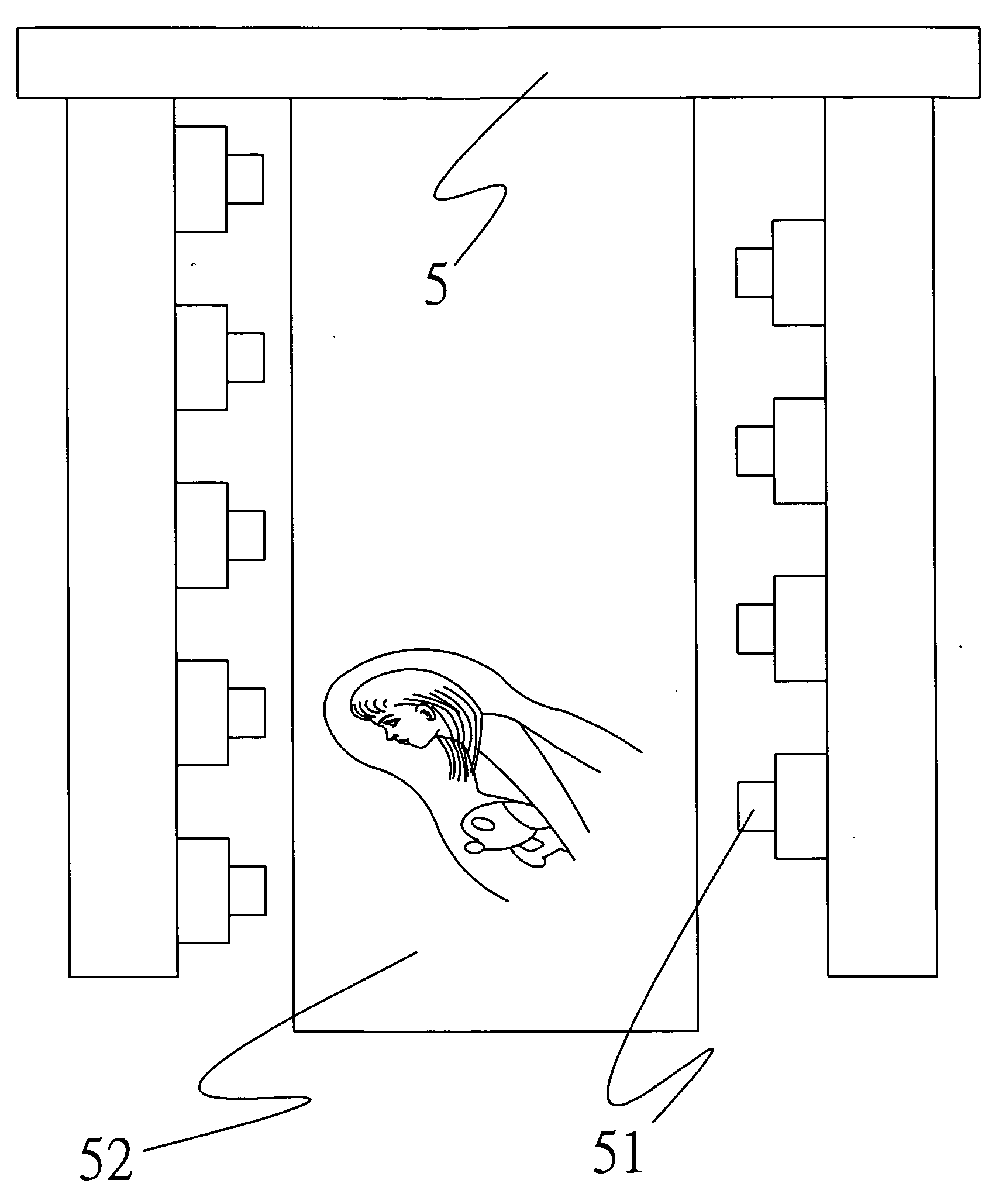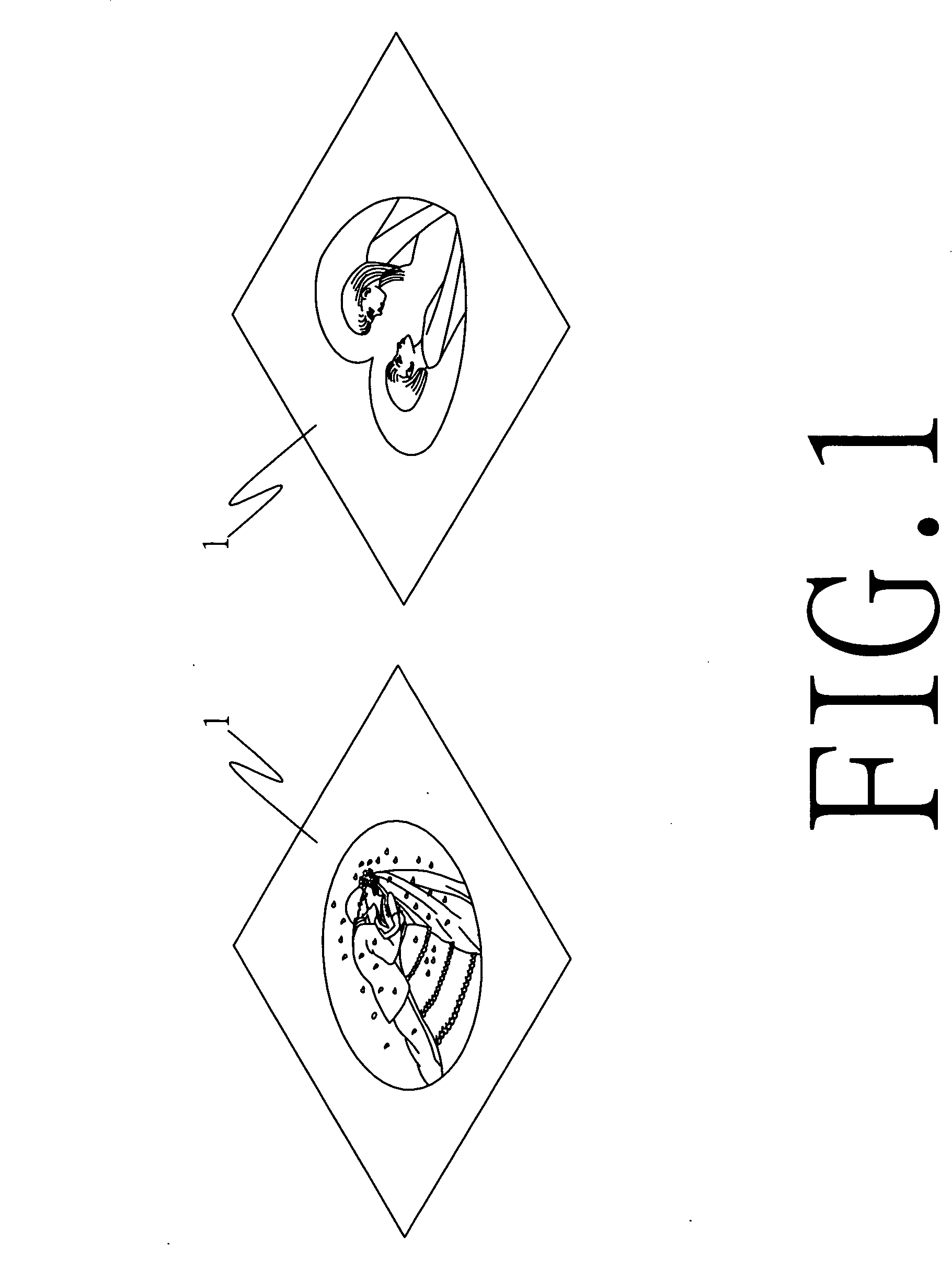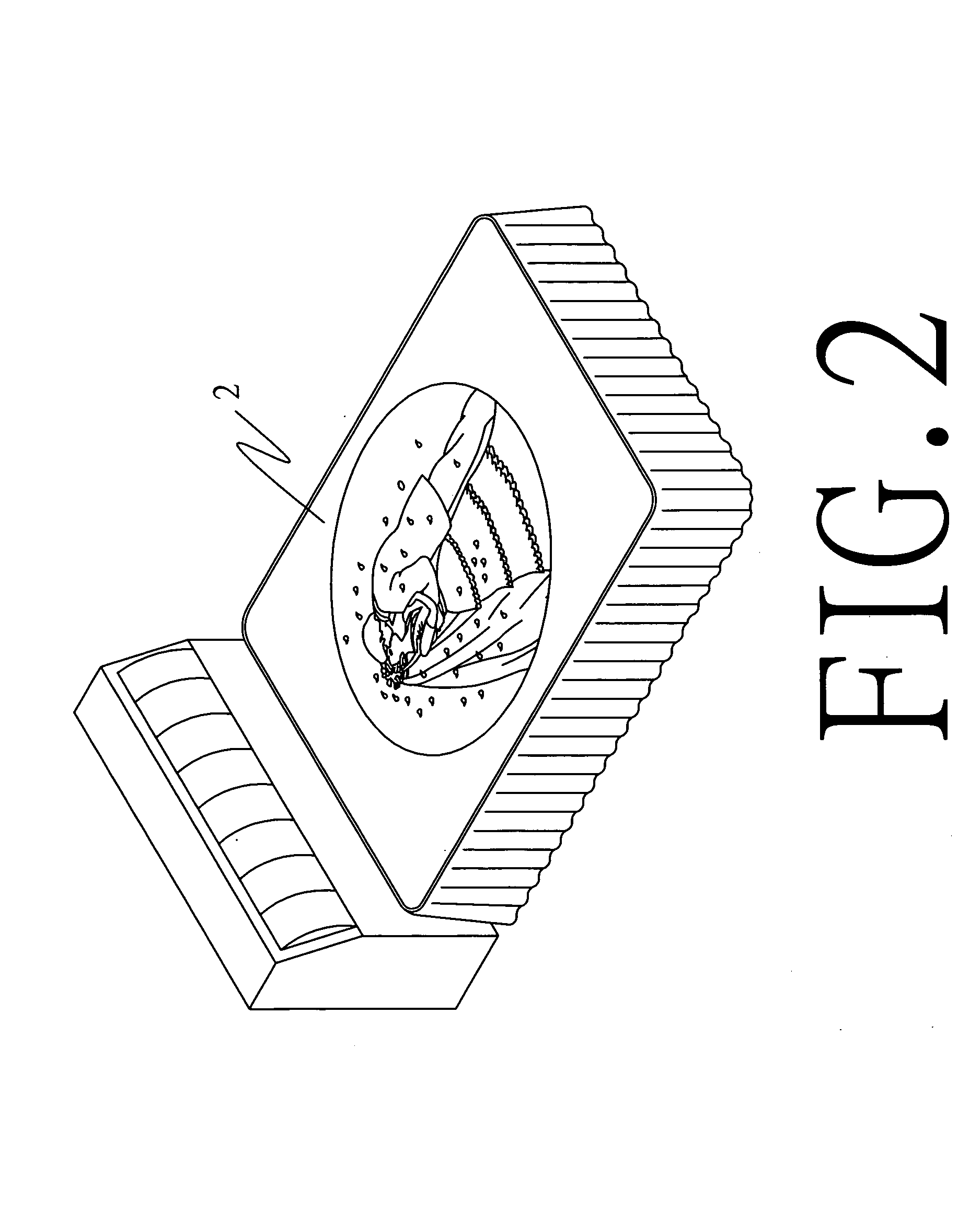Method for printing images on textile fabric
a textile fabric and image technology, applied in the direction of dyeing process, printing, textiles and paper, etc., can solve the problems of not meeting consumer requirements, unable to show layers, and unable to choose products with large printed patterns, so as to achieve easy dyeing or printing images, reduce the absorption of dyes into the cloth, and achieve true and bright
- Summary
- Abstract
- Description
- Claims
- Application Information
AI Technical Summary
Benefits of technology
Problems solved by technology
Method used
Image
Examples
Embodiment Construction
[0014]The objectives, shape, structure, apparatus, characteristics and effects of the present invention will become apparent by the detail description together with the accompanying drawings. Some of the elements of the present invention may be substituted by their equivalents, and the detailed description of preferred embodiments given in the specification illustrates the structure of the invention.
[0015]FIG. 1 shows a personalized photo to be put on the textile fabric and FIGS. 2 and 3 are preferred embodiments and flow chart of the textile fabric used in the method.
[0016]Referring to FIG. 4, the method of the present invention 1 of the present invention is to proceed a boil-off and bleaching process to soften a cloth, and the cloth goes through a leveling process, and then the cloth is soaked in a mixture of kaolin, developer, dispersant and color fixative to let the chemical mixture fills the tiny holes between tangled filaments. After the chemical mixture is permeated and conso...
PUM
| Property | Measurement | Unit |
|---|---|---|
| color | aaaaa | aaaaa |
| distance | aaaaa | aaaaa |
| area | aaaaa | aaaaa |
Abstract
Description
Claims
Application Information
 Login to View More
Login to View More - R&D
- Intellectual Property
- Life Sciences
- Materials
- Tech Scout
- Unparalleled Data Quality
- Higher Quality Content
- 60% Fewer Hallucinations
Browse by: Latest US Patents, China's latest patents, Technical Efficacy Thesaurus, Application Domain, Technology Topic, Popular Technical Reports.
© 2025 PatSnap. All rights reserved.Legal|Privacy policy|Modern Slavery Act Transparency Statement|Sitemap|About US| Contact US: help@patsnap.com



